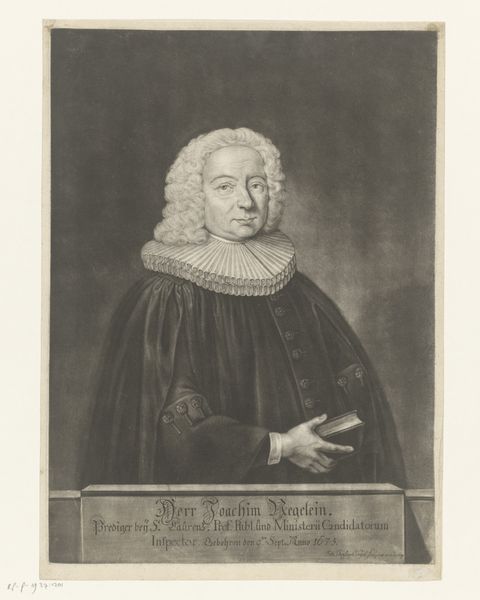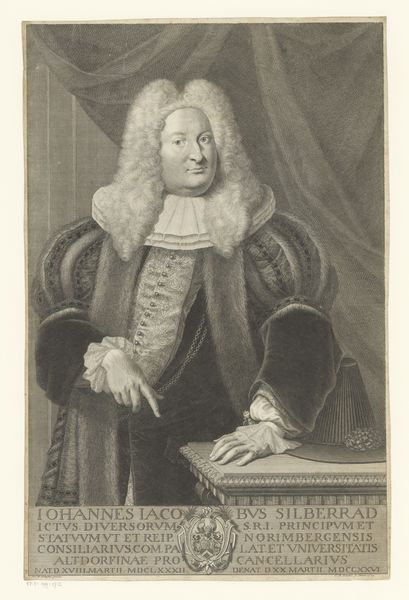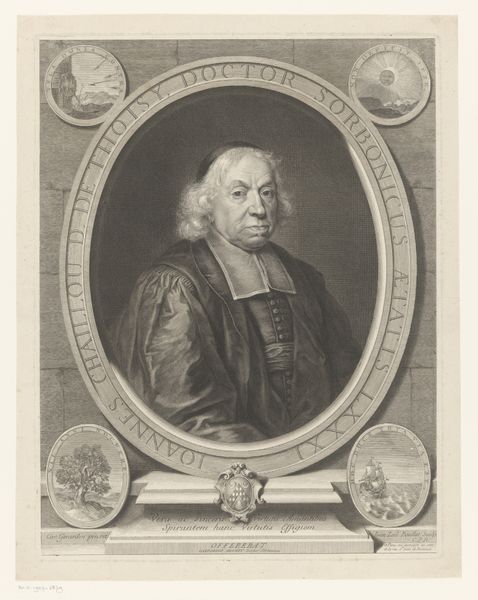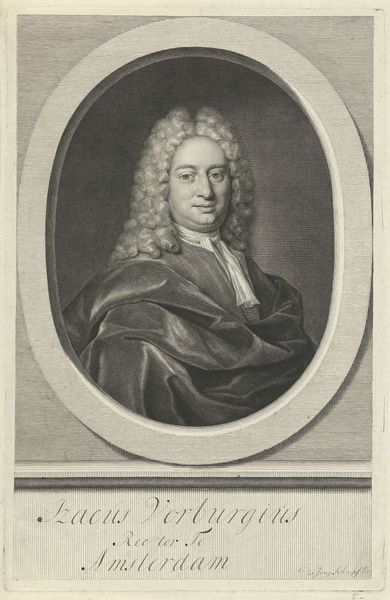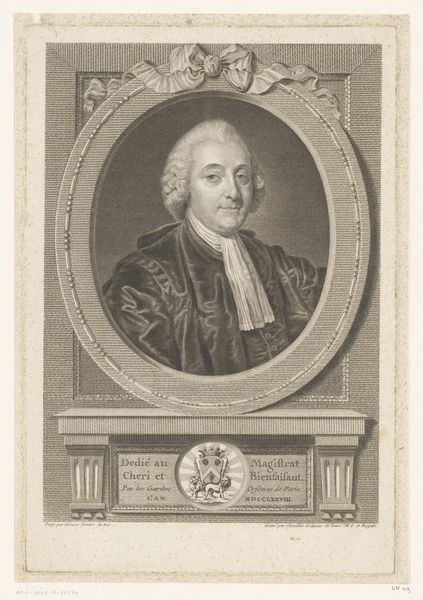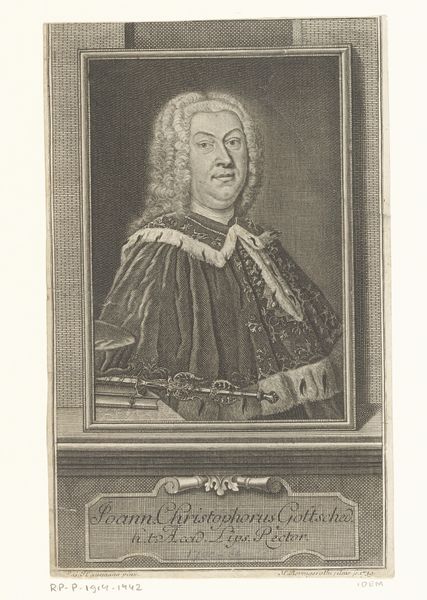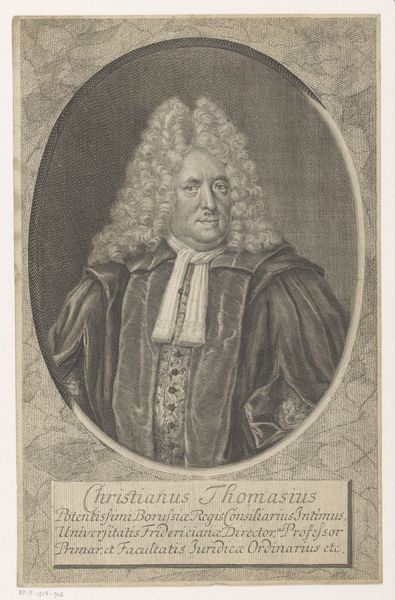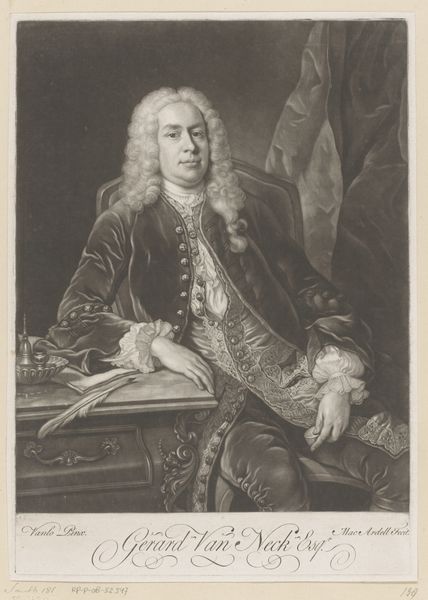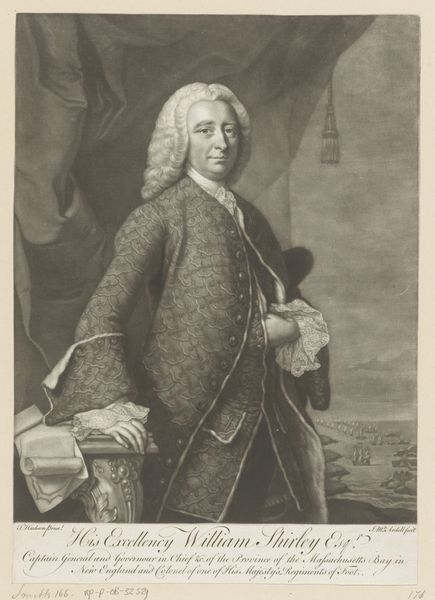
drawing
#
portrait
#
pencil drawn
#
drawing
#
baroque
#
caricature
#
pencil drawing
#
portrait drawing
#
history-painting
Dimensions: height 365 mm, width 262 mm
Copyright: Rijks Museum: Open Domain
Curator: Let's delve into this depiction of Robert Walpole, likely created between 1715 and 1721, executed as a drawing, probably with graphite or chalk. Notice the dense hatching giving form to his garments and the architectural element behind him. Editor: My first impression is one of subtle power. Even in monochrome, Walpole radiates authority. The artist captures a sense of unwavering resolve through controlled lines and delicate shading, quite commanding. Curator: Indeed. The artistic choice to depict him in a drawing – a medium readily accessible to many workshops – speaks volumes about how images of power were being disseminated in the early 18th century. Were these drawings later translated to prints? It begs a further look at how the Walpole machine utilized popular media. Editor: Precisely! His sartorial choices here aren't merely decorative. They symbolize rank and privilege. The sash, the Order of the Garter… these are potent symbols aimed to visually project him as the "Right Honorable." And note how these symbols are arranged on the body; even the subtle lace around his wrists has specific connotations for the time. It speaks to the evolving visual language of leadership. Curator: That's insightful. Let's consider the material components further. The paper itself, its sourcing, the cost of graphite in this era, would affect its market; it adds depth to our understanding. Who owned or accessed a drawing of the First Lord Commissioner of the Treasury? These details can enrich our knowledge of consumer habits, patronage and, in the long run, how power manifested across the culture of that period. Editor: Absolutely. And don't overlook the artist’s intentionality. While seemingly straightforward, observe the subtle angling of Walpole's hand. It's a deliberate pose—not quite welcoming, but asserting dominance, and directing one’s focus toward his attire and face. Such considered choices in representation construct Walpole's cultural persona for posterity, making the drawing both artwork and carefully designed political symbol. Curator: That’s a convincing observation. The intersection of the social, political, and material… Editor: Which the artist, likely a printmaker themselves, understood perfectly when rendering his subject. Curator: Well, it's quite interesting to see this dance between image and intention playing out even now. Editor: Yes, this drawing serves as a window onto an era where art and politics intertwined to craft, and reinforce, influential public figures.
Comments
No comments
Be the first to comment and join the conversation on the ultimate creative platform.

